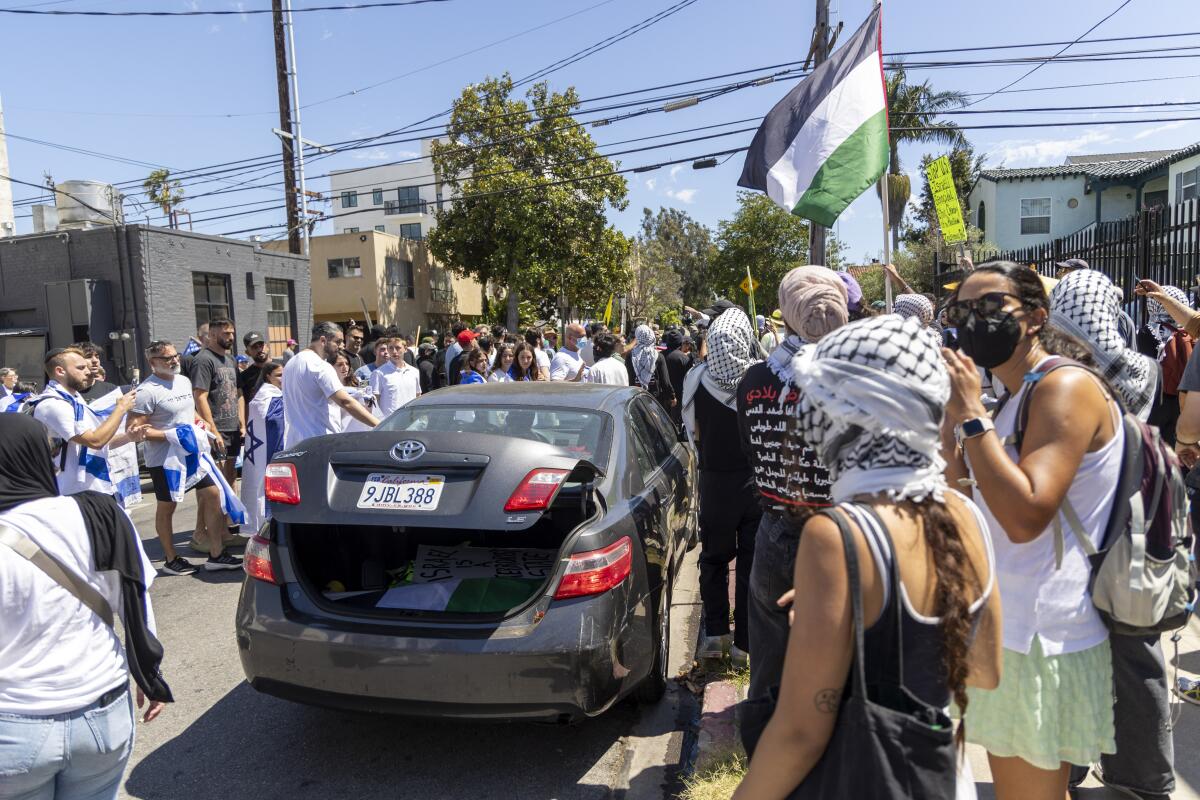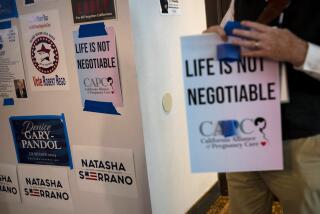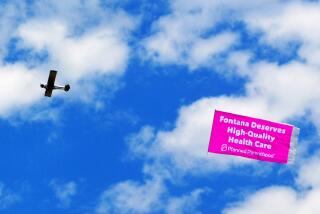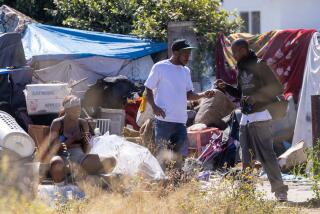‘Bubble zones’ proposed to keep back protesters at abortion clinics and synagogues in L.A.

Protesters would need to give 8 feet of space to people entering abortion clinics, schools or places of worship across swaths of Los Angeles County under two “bubble zone” proposals gaining speed.
Citing rising violence and unruly protests, L.A. County and city officials inched forward Tuesday with the proposals, which would make it a misdemeanor for protesters to intentionally block the entrances of healthcare facilities, schools or religious institutions — or demonstrate within 8 feet of anyone trying to get inside. The protective 8-foot “bubble” would be required within 100 feet of a facility’s entrance.
The Board of Supervisors unanimously voted Tuesday to ask county lawyers to draft an ordinance that would apply to unincorporated areas, home to 1 million people.
L.A. City Councilmembers Katy Yaroslavsky and Bob Blumenfield introduced a nearly identical motion, which is slated to go before the council’s public safety committee in the coming weeks.
“Even here in Los Angeles County, we have seen how intimidation is used to prevent community members from entering facilities to receive essential services,” Supervisor Lindsey Horvath, who crafted the county’s policy, said in a statement.
In June, pro-Palestinian protesters demonstrated outside a temple in Pico-Robertson, part of Horvath’s district. The protest turned violent, drawing a rebuke from the White House. Several Jewish advocacy groups wrote letters in support of Horvath’s proposal, saying they believed the law would protect the Jewish community in the face of rising hate crimes and threats against synagogues.
Salam Al-Marayati, president of the Muslim Public Affairs Council, agreed that protesters needed to “respect people’s access” to places of worship. But in an interview, he said he has “very little confidence” that police would enforce the law equally and believes it could be weaponized to squash student protests against the war in Gaza.
Under the county proposal, demonstrators would be barred from “engaging in oral protest” within 8 feet of anyone near the entrance of a school.
“People walking on the sidewalk protesting the genocide in Gaza, that should be protected,” Al-Marayati said. “We’re just not assured that this measure would protect these legitimate peaceful protests.”
Al-Marayati said he found out about the county proposal on Monday.
“Nobody ever consulted us on this measure. A community member told us about it, and we found it on the agenda,” he said. “No call, no email, no invitation.”
The county proposal would also regulate protests at healthcare facilities, notably Planned Parenthood clinics. Sue Dunlap, the head of Planned Parenthood Los Angeles, said she was hopeful that a buffer would tone down unruly protests that she said have spiked since the overturning of Roe vs. Wade.
“You need to see it to understand what it’s like,” said Dunlap. “It’s crazy — 800 people encircling the building that’s the size of a standalone Starbucks.”
Several antiabortion demonstrators opposed the county proposal at Tuesday’s board meeting and said they have never encountered violence or property damage when protesting. “We’re peaceful people,” said one man, who has been demonstrating in the county for 25 years.
Jenny Dodson Mistry with the National Institute for Reproductive Health said that bubble zone laws can help keep a clinic’s employees and patients safe — as long as they’re actively enforced, and protesters and healthcare workers are educated about them.
“You can’t see a bubble,” she noted.
County officials plan to model their law after a Colorado law that was one of the first in the nation and survived legal challenges from antiabortion activists. It was upheld by the Supreme Court, which ruled that the bubble zone did not violate free speech rights.
The city of L.A. proposal appears to be broader than the county’s version. It would bar protesters from blocking “community/public” facilities as well as healthcare, educational and religious institutions.
The proposed city ordinance would also bar protesters at these locations from coming within 8 feet of another person without consent, said Leo Daube, a spokesperson for Yaroslavsky.
More to Read
Sign up for Essential California
The most important California stories and recommendations in your inbox every morning.
You may occasionally receive promotional content from the Los Angeles Times.












